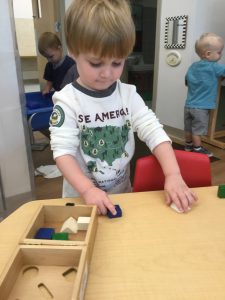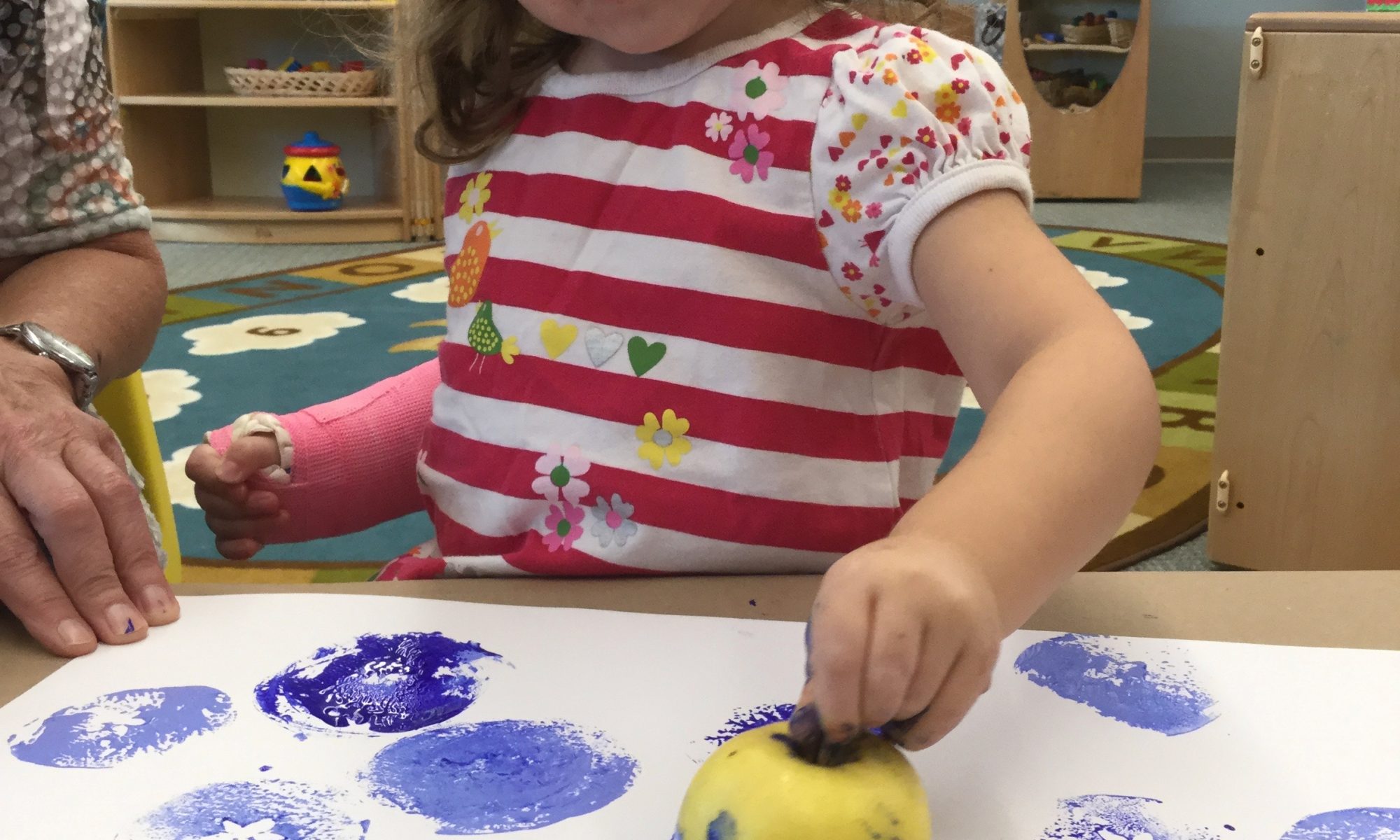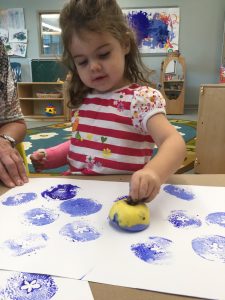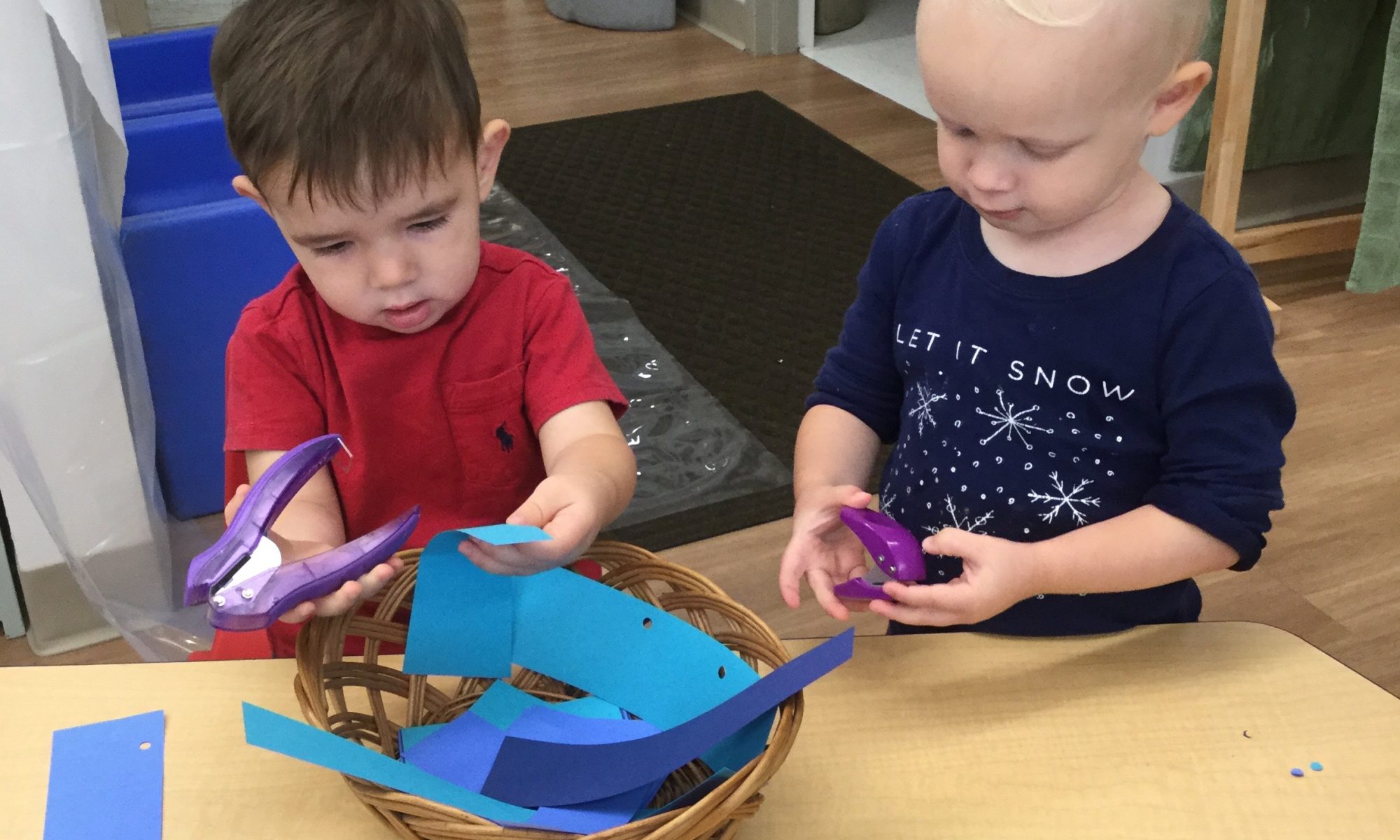Materials
A water table (a large, shallow plastic container placed on the floor or on a low table)
3–4 inches of water
Small plastic cups, measuring cups, funnels, basters, large spoons, jars, sieves, etc.
Towels
Adult supervision
Directions
Water play for preschoolers is great fun—ask any three-year-old! But in addition to being fun, it’s a great way for children to improve hand-eye coordination, dexterity, precision; experiment with basic math concepts, including volume, fractions, (half-full, quarter-full) more/less; science concepts, as they determine why some things sink while other things float; social skills as they talk with others about what they’re experiencing and learn to share the water toys.
For blue week, we tried adding blue food coloring to the water. We used only blue cups, funnels, etc. We even used a blue water table! Children love experiencing water play, and the benefits of such an activity are far-reaching, and well worth the occasional spills!



 promoting basic math skills, vocabulary, awareness of same/different, and fine motor skills. Set a shape sorter in front of your child with all the shapes beside it. Explain to your preschooler that each shape has its own special “door” into the sorter, and his job is to find the right door for each shape. Pick up a shape and identify it to your child (a circle, triangle, star, – whatever the shape may be.) Give the shape to your child to examine, talking about what makes it different from the others. Then, let your child examine the sorter itself. Typically, there are cutouts for the shapes on all sides of the sorter, so you can examine the sides of the sorter, one at a time, comparing the cutouts to the shape. Let him try the shape in some of the cutouts, gently encouraging him to perhaps turn the shape a little to fit it into the sorter. Congratulate him when he finds the correct “door”. Then choose another shape and proceed in the same manner.
promoting basic math skills, vocabulary, awareness of same/different, and fine motor skills. Set a shape sorter in front of your child with all the shapes beside it. Explain to your preschooler that each shape has its own special “door” into the sorter, and his job is to find the right door for each shape. Pick up a shape and identify it to your child (a circle, triangle, star, – whatever the shape may be.) Give the shape to your child to examine, talking about what makes it different from the others. Then, let your child examine the sorter itself. Typically, there are cutouts for the shapes on all sides of the sorter, so you can examine the sides of the sorter, one at a time, comparing the cutouts to the shape. Let him try the shape in some of the cutouts, gently encouraging him to perhaps turn the shape a little to fit it into the sorter. Congratulate him when he finds the correct “door”. Then choose another shape and proceed in the same manner.







